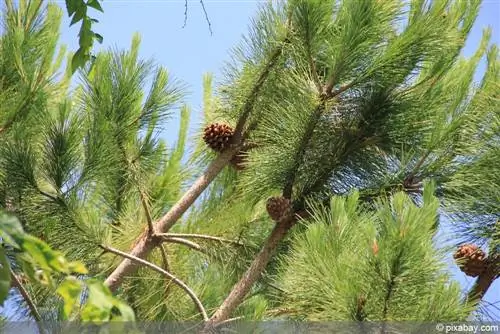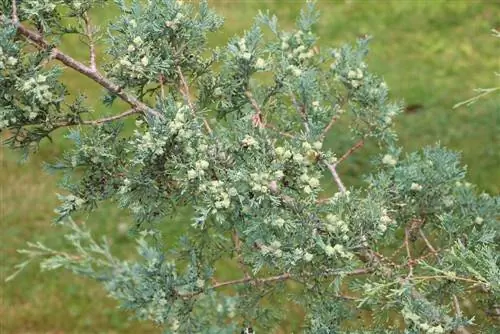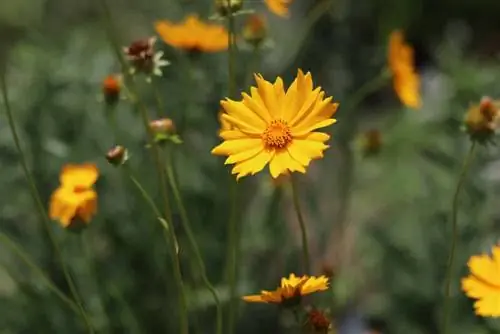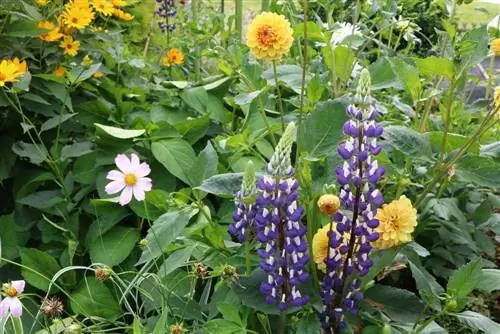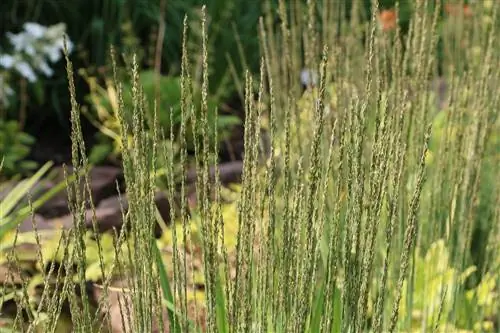- Author admin [email protected].
- Public 2023-12-17 03:39.
- Last modified 2025-01-24 12:45.
The blue maiden pine sets representative accents in beds and pots all year round. The noble conifer shines with olive green needles and shapely cones. Frugal undemanding and slow growth characterize Pinus parviflora 'Glauca' as an easy-care ornamental tree for all sunny locations. Picturesquely twisted branches and loose growth inspire the creative gardener to cultivate graceful forms of furious garden bonsai. These instructions will familiarize you with expert care, skillful cutting and explain the correct posture as a bonsai.
Care
The categorization of a blue girl pine as a particularly easy-care conifer is only justified if important premises are taken into account. A combination of perfect location conditions, expert planting and a balanced supply of water and nutrients guarantees he althy growth with a dense needle cover. All the details surrounding the best possible care are explained in more detail below:
Location
Blue maiden pines are extremely light-hungry. Reserve a sunny, airy location in the bed and on the balcony. The pretty conifers react to a lack of light by shedding their olive-green needles or entire branches die off.
Soil and substrate
The many advantages of a Pinus parviflora 'Glauca' include its modest requirements for soil and substrate. In the bed, the picturesque conifer thrives in normal garden soil, which likes to be well-drained and rich in nutrients. In the pot, the needle-like beauty prefers to stretch out its roots in high-quality pot plant soil. When purchasing, please pay attention to peat-free quality.
Plants in the bed
The best time to plant a young girl pine 'Glauca' is in autumn. First soak the potted root ball in water until no more air bubbles appear.
How to plant correctly:
- Dig a planting hole with twice the volume of the root ball
- Enrich the excavation by a third with ripe leaf compost and a handful of horn shavings
- Unpot the soaked root ball and plant it in the middle of the pit
In a wind-exposed location, protect the young conifer against wind throw with a support post. Tamp the soil firmly and water generously on planting day and in the following weeks to support rooting.
Plants in pots
Planting a girl's pine in a container is similar to how it is planted in a bed. Additionally, spread a drainage layer made of potsherds or gravel on the bottom of the pot to counteract waterlogging. Measure the planting depth so that a five centimeter high watering edge remains free.
Pouring
Drought stress is the critical point in caring for a blue girl pine. If the root ball dries out, needles will fall and shoots will die. Water the coniferous tree as soon as the bed soil or pot substrate has noticeably dried on the surface. Ideally, water with rainwater or well-stale tap water.
Fertilize
With a special conifer fertilizer you can cover your nutrient requirements in an exemplary manner. Apply the fertilizer from March to August. Please water before and after with clear, soft water so that the blue maiden pine can absorb all the nutrients and any s alts it contains do not cause root damage. At the end of August, stop supplying nutrients so that the conifer can mature before winter.
Wintering
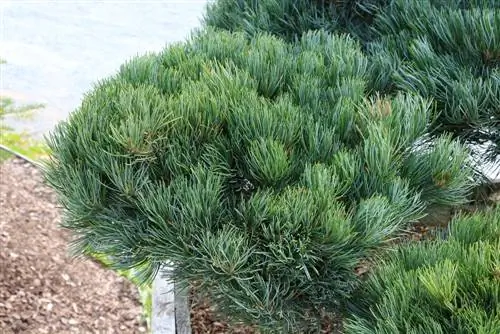
In this country, the blue maiden pine is reliably hardy. We only recommend winter protection in the planting year and in the pot. Cover the root disc in the bed with a layer of autumn leaves and needle twigs. Please place a bucket on wood and cover it with fleece, bubble wrap or jute. The substrate is given a protective layer of straw, leaves or bark mulch.
Cutting instructions
By nature, a blue maiden pine impresses with an unorthodox habit that does not require any in-depth pruning measures. You should therefore not subject the natural beauty to planting or training pruning unless it is intended to be kept as a bonsai. How to properly cut a free-growing Pinus parviflora:
- Best time is between May and June
- Promote branching by cutting back fresh shoots by a third or half
- Thin out dead, crossing or inward-facing branches
- Excessively long shoots in the needled area are directed to an internal side shoot
The main premise for cutting Pinus parviflora 'Glauca' is: always cut in the green, needled shoot area. Like all pine plants, the girl pine only thrives on its outer branch tips. In the inner, brown area the conifer has stopped growing and will no longer sprout there.
Stance as a bonsai
With elegance and graceful charm, the Blue Girl Pine gives a magical aura as a bonsai bed, balcony and terrace. When it comes to location, planting and care, the conifer pulls together with its free-growing counterparts. Careful cutting care and artistic wiring make the difference. Gardeners with a long line of patience are suitable for Asian garden art. Up to 30 years of conscientious manual work must be invested in order for a blue girl pine to develop into an evergreen bonsai. This applies equally to an XXL bonsai in the garden and a bonsai in a pot. The following instructions provide an overview of the central measures involved in keeping garden bonsai in beds, pots and bowls:
Cutting for design and preservation
The growth of one shoot per year has a significant influence on the design of a girl's pine tree as a bonsai. The olive green needles sprout in bunches of five once a year in spring. This prohibits radical pruning, as is common on pines that sprout twice a year. This is how a design and preservation cut works:
- Best time is in spring from May to June
- Place blue girl pine at eye level
- Cut or pluck previous candles to an appropriate, equal length
- If 2 candles sprout from a common point, the weaker candle breaks out or is cut off
- Pluck out excess, old needles to achieve an even distribution in the tree
In autumn at the latest, thin out excess shoots from the crown. To do this, leave the two most promising shoots that form a V-shaped fork, grow horizontally in the desired direction and have equal diameters. All remaining shoots are removed. The rule of thumb for designing a blue girl pine as a bonsai is: shoots in the upper crown area must never be thicker than shoots at the base of the crown.
Tip:
Pruning on a girl's pine tree can cause brown, unattractive spots. Plucking is the better method. Grasp the shoot tip with your thumb and forefinger. Pull carefully until the covered part of the shoot breaks at its weakest point. The method leaves no interface, so your bonsai regenerates faster.
Wiring and bending
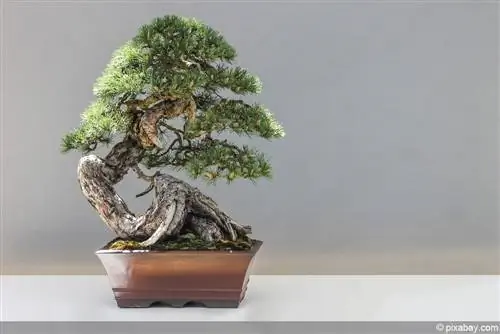
Pruning training for spectacular bonsai is closely linked to regular wiring and bending. Your girl's pine tree will thrive in the desired bonsai shape if you direct the branches with wire. Aluminum wire is well suited because it is easier to process than copper wire. The correct wire thickness is one third of the shoot thickness. How to wire and bend a bonsai correctly:
- Best time frame is from early fall to early spring
- Cut wire to appropriate length
- Wrap the trunk or leading branch twice at a 45 degree angle
- From there continue wrapping to the tip of the branch
- Only bend when all branches in the bonsai have been wired
It is often the case that several aluminum wires extend from the trunk or leading branch to the various branches. Wrap the wires neatly and parallel to each other. Wires wound on top of each other not only give a unkempt appearance, but also make the subsequent unwinding process considerably more complicated.
Care in the shell
As a mini-sized tree, a blue maiden pine thrives in style in the bonsai pot. In contrast to majestic specimens in beds and pots, the following premises must be observed for successful care:
Substrate
Bonsai substrate for the pot is characterized by first-class water storage, good permeability and optimal ventilation. Conventional plant soil cannot meet these requirements. Plant a blue maiden pine in a balanced mix of akadama, lava granules, pumice gravel, humus and fine gravel. A mixing ratio of equal parts has proven to work well in practice. For beginners in the cultivation of bonsai, we recommend a ready-made mix from a specialist retailer.
Pouring
In a bowl, your girl's pine tree has significantly less substrate available than when planted in a bed or in a large balcony pot. Therefore, check every day early in the morning or in the evening to see whether the soil has dried out. The ball shower is practical for supplying water to pot bonsai. Fill the flexible ball with filtered rainwater or stale tap water. Water thoroughly until the water runs out of the bottom opening.
Fertilize
If a blue maiden pine thrives as a bonsai in a pot, it is denied access to nutrient reserves in the soil. Regular fertilization therefore plays a vital key role in care. Apply a special liquid bonsai fertilizer to suit the season. In spring we recommend a nitrogen-focused NPK formulation, such as 12+6+6. In summer the conifer benefits from a balanced NPK formulation, such as 10+10+10. A potassium-focused autumn fertilizer with NPK 3+10+10 is beneficial for strengthening winter hardiness.
Repotting
For girl's pine 'Glauca' in a large container, changing to a larger container is a rarity. This does not apply to cultivation as a pot bonsai. Make a note on the care plan that you should repot your pine bonsai every two to three years. At the latest when the root strands crowd in a circle around the ball, the measure can no longer be put off. How to proceed correctly step by step:
- The best time is in spring, before budding begins
- Remove the root ball from the edge of the bowl with a knife
- Lift the bonsai out of the pot to remove the old substrate with a stick
- Important: leave half of the root ball untouched to protect vital mycorrhizal fungi
- Cut back root strands that are too long by a maximum of a third
- Cover drainage holes with nets and sprinkle in a thin layer of lava granules
- Pot the bonsai with fresh substrate
- Work the substrate between the roots with sticks
- Fill up the remaining bonsai soil, press down and water
As long as your Blue Girl Pine is in the training and development phase, the bowl should offer the roots enough space to develop. Older trees have adapted to life in a shell with compact root systems. If you are unsure about choosing a new pot, these three rules of thumb will help: Pine trees thrive in unglazed bonsai pots. The bowl length corresponds to two thirds of the tree height. The bowl should be as deep as the trunk is thick.


